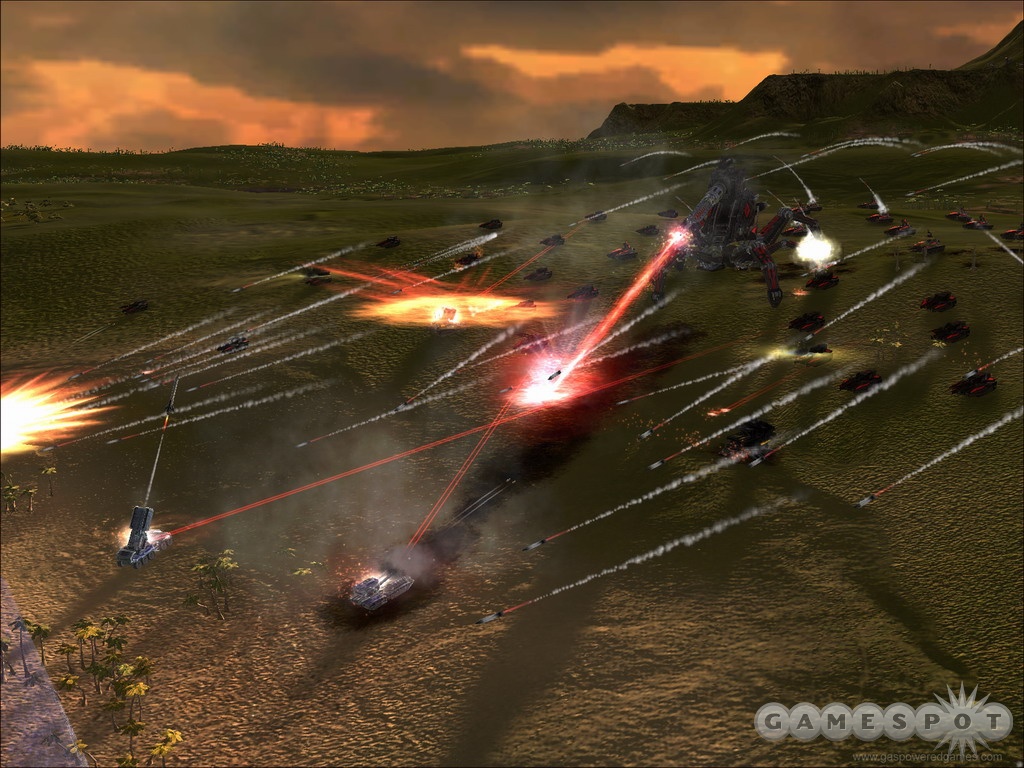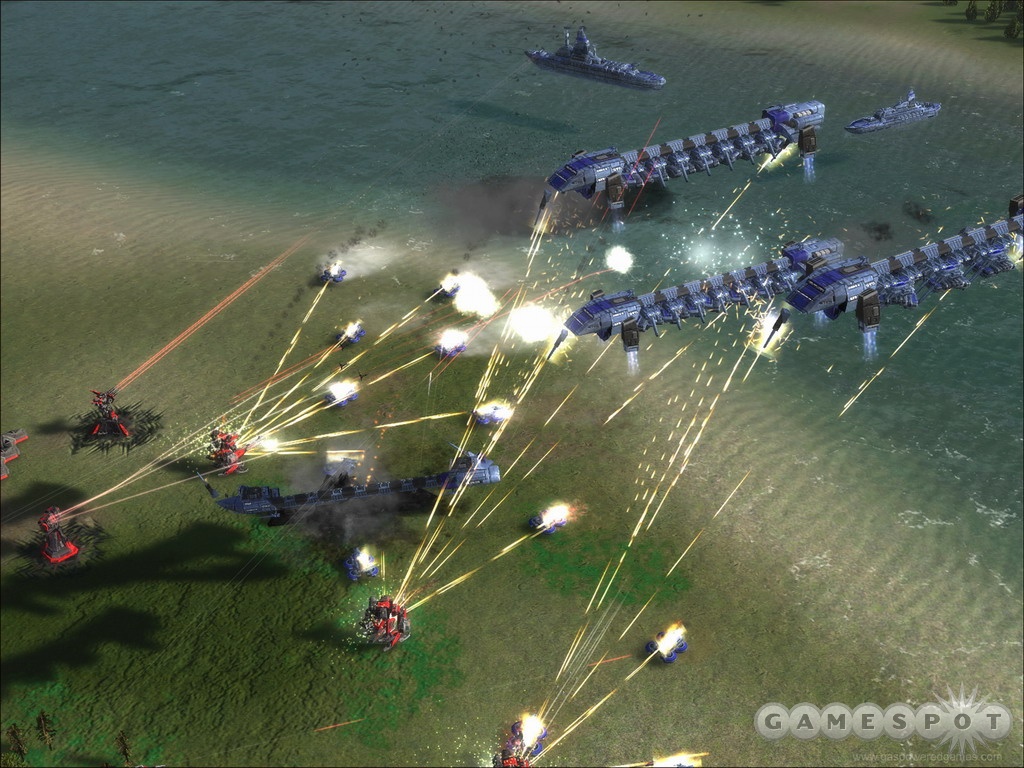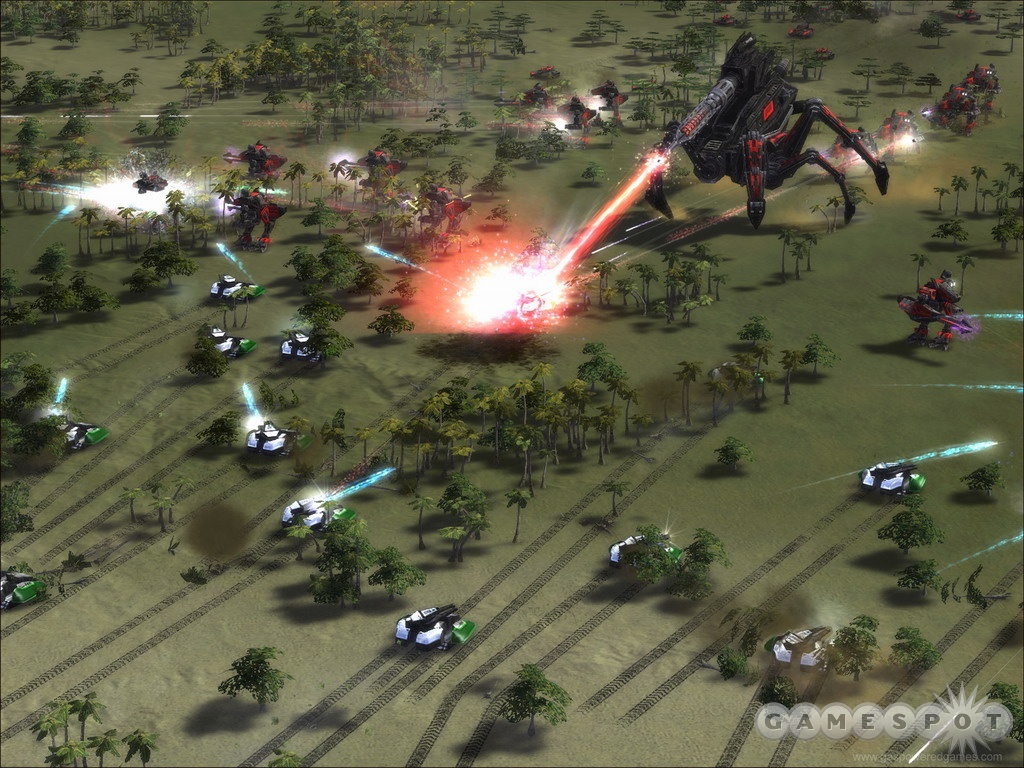Supreme Commander Updated Q&A - Nukes, Scale, and the Supreme Commander Itself
Designer and creator Chris Taylor gives us the latest news on this highly anticipated sci-fi real-time strategy game.
There are a number of promising strategy games looming in 2007, but perhaps none quite so anticipated as Supreme Commander, the sci-fi real-time strategy game from THQ and developer Gas Powered Games. As the spiritual successor to 1997's Total Annihilation, one of the most popular real-time strategy games ever made, Supreme Commander has a lot to live up to. You will be able to command three different factions of humanity as they battle for galactic supremacy, but what differentiates Supreme Commander from most real-time strategy games is its enormous scale. You can have armies, navies, and air forces maneuvering and fighting on maps that are hundreds, if not thousands, of square kilometers in size. For the latest on the game, we caught up with creator Chris Taylor.
GameSpot: Could you give us a quick update on where Supreme Commander is right now in development?
Chris Taylor: We are getting very close to the end, and since we passed beta, [we] only have bug fixes, optimizations, and some tuning and balancing left to do. We also have some last-minute touches to do on a few of our full-motion video sequences.

GS: The beta test is under way, and there are a lot of reports coming out of it, so is there anything you want to say about what will be changed or fixed in the final version?
CT: We get a lot of valuable information out of the beta. First, we are finding problems with people connecting to games through firewalls and such. Next, we look at hardware compatibility issues. And, lastly, we pay very close attention to the game tuning and plug holes that players find with regard to game "exploits."
GS: We want to learn more about the Supreme Commander unit itself, which is the main battlefield command and construction unit. For instance, could you cover the upgrade system for the Supreme Commander, like how you can add new capabilities to it? And are the Supreme Commanders for each faction essentially the same, or is there some variation in their powers and abilities?
CT: The player is the Supreme Commander. The player is housed inside the armored command unit (ACU). It's all part of how the fiction is held together. We wanted to give the player flexibility to use the ACU as a base defense unit (especially early on) and also as a unit that can be deployed in the field. In order to use the unit in the field, we added a bunch of upgrades. They are not cheap, but they are also very powerful, so it is a key decision with important trade-offs.

Most of the ACU's have similar features, including shields, teleporters, and weapon upgrades, as doing anything else may severely unbalance the game. But we did do a few things to make each faction unique. Examples include having tactical nukes on the UEF ACU [while] the Cybran ACU has full cloaking and radar stealth. And, the Aeon ACU has a stun-field generator, to name a few. We really like asymmetric design, but when you look at something like a strategy game, asymmetry is something you have to be extremely careful with.
GS: Is it truly "game over" if your Supreme Commander is destroyed, or will there be a way to recover from such a devastating loss? Can the unit be used offensively in any way, or will you want to keep it safely defended in your base for the most part?
CT: The game has an option, which you can set, to make the game end if your ACU is destroyed. We have several options that specify victory conditions that can be selected from the skirmish and multiplayer staging areas.
Going Nuclear
GS: We understand that there are different kinds of nuclear weapons in the game. Could you go over them, and could you also address the deal with potentially outfitting your Supreme Commander with nukes? 
CT: There are two different kinds of nukes: strategic and tactical. Strategic nukes are delivered using a large missile-delivery system and can hit targets across the largest maps; whereas tactical nukes, like the kind the UEF ACU fires, are of a much shorter range and have a much smaller explosive force, although [it's] still very devastating. The only other exception is nuclear artillery, which can fire a tactical payload across the largest maps. [It] seems like a contradiction but makes sense when you think about the payload in an artillery round. We took most of this from real-life weapon systems. Lastly, the units that fire these weapons include both static structures and submarines, but submarines have a much shorter range than traditional nuclear silos; however, they have the advantage of being water-based and easily hidden. The UEF ACU is the only unit which can fire a tactical, short-range nuke, but you never know what sneaky things the other factions will do to counter this in the future.
GS: How does the map size affect the pace of the overall game? If two players battled it out on the largest map, how long would the game last? Flipping the question around, if you put them on a small map, the battle will be fought much faster, but will there be enough time to really exploit the entire tech tree?
CT: The size of the map is almost a direct correlation to the length of the game, but the relationship is not linear. For example, if you play on a map twice the width and height, the game time might increase by four to six times. However, if the larger map is mostly water, then the time will reflect this. In my estimate, if two players played on the largest map, it could be anywhere from six to 12 hours (with a healthy amount of water on the map), and the game would end with nuclear attacks all over the place, massive invasions, and experimental units aplenty. It would be insane, to say the least.
GS: We understand that the tidal-wave attack (which creates a devastating tidal wave by exploding a nuclear device at sea) was dropped from the game. It's normal for features to drop during development, but has the game lost many such features, and are any of these things something we can look forward to in a patch or a future product?
CT: You are correct that the standard game development process drops a lot of features, but since Supreme Commander had too many to start with, I doubt anyone will notice. Most every single idea that we have developed on paper is kept for a future release, be it an expansion pack or a full-on sequel.
GS: How are the system requirements shaping up at this point? Do you have a clearer idea about what sort of machine you'll need? We know that the team is using dual-core CPUs, but how will the game scale to the much more prevalent single-core machines out there?
CT: Optimizations are an ongoing process, and though we hope to reach down to a lower minimum spec, time is the gating factor, and we need to release the game. I don't know that we officially have a minimal spec, but regardless of what it ends up being, to play on the larger maps, with large unit counts, will require a pretty beefy rig.
GS: Finally, are there any more details on the multiplayer in the game? We know of cooperative and competitive modes, but what are the plans for leaderboards or rankings? And there have been rumblings about some kind of overarching meta game to link the online matches as well. Do you have anything to say about that?

CT: If you have seen the beta, we have a system for matching 1V1 (and soon 2V2) for what we call ranked-ladder games. This is coming together nicely, but what's important about the way we developed our online matchmaking and multiplayer component is that we can update it anytime without affecting the main game, which will allow us to react very quickly to feedback and problems encountered. It's the part of the game that is simple in principle, but the specifics of implementation are quite complex. We also see this as something that will continue evolving for years to come, especially when you factor in what's possible in the mod community. It's going to be an exciting place to hang out. Oh, and we also have clan support, which means you can create and manage a clan all within our matchmaking system.
GS: Thanks, Chris!
Got a news tip or want to contact us directly? Email news@gamespot.com
Join the conversation